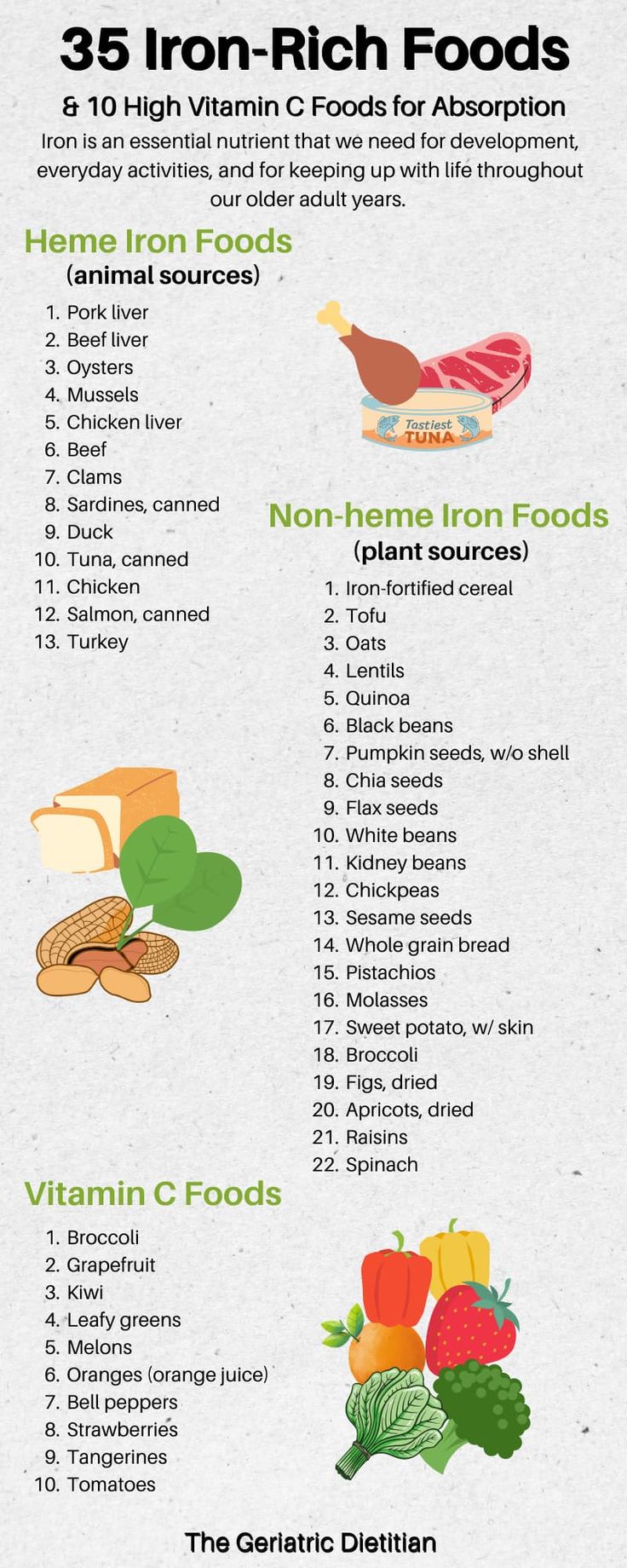Iron, an essential mineral for our bodies, plays a crucial role in the production of hemoglobin, the oxygen-carrying protein in red blood cells. A deficiency in iron can lead to anemia, causing fatigue, shortness of breath, and impaired cognitive function. To combat this, consuming a diet rich in iron is paramount, especially for individuals with increased iron needs, such as pregnant women, menstruating individuals, and those with certain medical conditions.
This printable list has been meticulously crafted to provide you with a comprehensive guide to iron-rich foods. Whether you’re a health-conscious individual, a nutrition professional, or simply looking to improve your overall well-being, this resource will empower you with the knowledge and tools to make informed dietary choices and optimize your iron intake.
Printable List Of Foods High In Iron

Bruv, are you feeling a bit knackered and pale? It could be that you’re not getting enough iron in your diet. Iron is an essential mineral that helps your body make red blood cells, which carry oxygen around your body. Without enough iron, you can feel tired, weak, and short of breath.
The good news is that there are plenty of easy ways to get more iron in your diet. Here’s a printable list of foods that are high in iron:
Red Meat
Red meat is one of the best sources of iron. A 3-ounce serving of beef contains about 3 milligrams of iron. Other good sources of red meat include lamb, pork, and venison.
Seafood
Seafood is another great source of iron. A 3-ounce serving of salmon contains about 1.5 milligrams of iron. Other good sources of seafood include tuna, mackerel, and sardines.
Beans and Lentils
Beans and lentils are good plant-based sources of iron. A 1-cup serving of cooked beans contains about 3 milligrams of iron. Lentils are also a good source of iron, with a 1-cup serving containing about 2 milligrams of iron.
Spinach and Other Leafy Greens
Spinach and other leafy greens are good sources of iron. A 1-cup serving of cooked spinach contains about 2 milligrams of iron. Other good sources of leafy greens include kale, collard greens, and turnip greens.
Fortified Cereals
Many cereals are fortified with iron. A 1-cup serving of fortified cereal can contain up to 10 milligrams of iron. Check the label to see how much iron is in your cereal.
Iron Supplements
If you’re not able to get enough iron from your diet, you may need to take an iron supplement. Iron supplements are available over-the-counter or by prescription.
Questions and Answers
What is the recommended daily intake of iron?
The recommended daily intake of iron varies depending on age, sex, and physiological status. For adult men, it is 8mg, while for adult women, it is 18mg. Pregnant women and menstruating individuals may require higher amounts.
Can I get enough iron from plant-based foods alone?
While plant-based foods contain iron, it is in a less absorbable form compared to iron from animal sources. However, consuming vitamin C-rich foods alongside plant-based iron sources can enhance absorption.
What are some common symptoms of iron deficiency?
Common symptoms of iron deficiency include fatigue, shortness of breath, pale skin, brittle nails, and impaired cognitive function. If you experience these symptoms, it is essential to consult with your healthcare provider.
